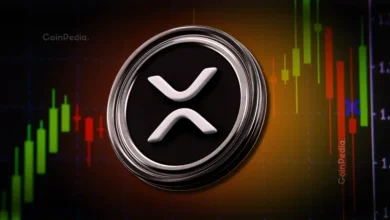
Permissionless blockchains like XRPL prioritize openness while offering flexibility, making global finance connectivity easier.
David Schwartz admits creating blokchain with developer activity, liquidity, trust, and real-world utility is hard.
XRP to focus on programmability, compliance-focused capabilities, and institutional liquidity.
Ripple’s Chief Technology Officer (CTO), David Schwartz, has addressed how XRPL is shaping the future of seamless, programmable finance in 2025. As the payment and stablecoin space is increasingly launching its own blockchain, he clarifies why the permissionless blockchain, like XRPL, with real-world utility, is essential for industry growth.
Permissionless Blockchains to serve Critical Infrastructure
Blockchains with permission validators can restrict reach and resilience. However, the permissionless blockchains like XRPL prioritize openness while offering flexibility, making it well-positioned for global financial connectivity. It is also ideally situated to serve as critical infrastructure for the world’s financial system.
In his recent post on X, Schwartz admitted that building a chain is difficult, but creating a thriving ecosystem with developer activity, liquidity, trust, and real-world utility is even harder. However, XRPL, a public, permissionless blockchain, became prominent.
He wrote, “The XRPL has real traction and institutional adoption because it’s been battle-tested, updated, and improved upon for well over a decade.”
- Also Read :
- Exclusive XRP Price Prediction: $5 Within Reach Before Bull Run Ends, Says Liminal Custody Exec
- ,
Why Was the XRPL Built?
Schwartz clarifies that XRPL was built to make transactions seamless and feasible. Its success comes from its long-standing reliability, decentralization, and adaptability.
Schwartz said, “You can pay directly in XRP for any issued asset, avoiding the friction and hidden costs of buying another token just to transact.”
“XRP is counterparty-free, accessible by all, and used as a bridge asset with real utility for payments, settlement, and liquidity. (Every transaction on the XRPL uses/burns XRP),” He added.
Now, the newer chains across the crypto industry are adopting features like XRPL. They are building features like deterministic finality and Proof of Authority-style consensus for predictable settlement.
What’s Next?
Ripple CTO reveals that XRPL is moving to the next phase of innovation. The XRPL’s future focus is to enhance programmability, enable compliance-focused capabilities, and boost institutional liquidity. It is poised to make the next phase of blockchain-powered financial infrastructure.
Never Miss a Beat in the Crypto World!
Stay ahead with breaking news, expert analysis, and real-time updates on the latest trends in Bitcoin, altcoins, DeFi, NFTs, and more.
FAQs
XRPL’s permissionless design offers global financial connectivity with 10+ years of battle-tested reliability, processing 3.8B+ transactions since 2012
XRPL uses Federated Consensus – settling transactions in 3-5 seconds with 200K+ TPS capacity, outperforming PoW/PoS chains for payments
New programmability features (Hooks v2) and CBDC integrations will launch, with 18+ central banks currently testing XRPL for settlements
Trust with CoinPedia:
CoinPedia has been delivering accurate and timely cryptocurrency and blockchain updates since 2017. All content is created by our expert panel of analysts and journalists, following strict Editorial Guidelines based on E-E-A-T (Experience, Expertise, Authoritativeness, Trustworthiness). Every article is fact-checked against reputable sources to ensure accuracy, transparency, and reliability. Our review policy guarantees unbiased evaluations when recommending exchanges, platforms, or tools. We strive to provide timely updates about everything crypto & blockchain, right from startups to industry majors.
Investment Disclaimer:
All opinions and insights shared represent the author's own views on current market conditions. Please do your own research before making investment decisions. Neither the writer nor the publication assumes responsibility for your financial choices.
Sponsored and Advertisements:
Sponsored content and affiliate links may appear on our site. Advertisements are marked clearly, and our editorial content remains entirely independent from our ad partners.







